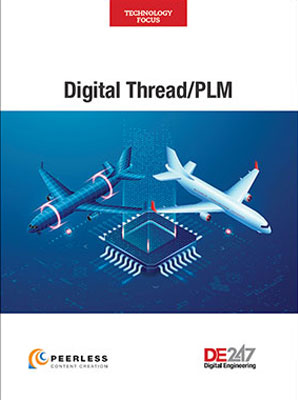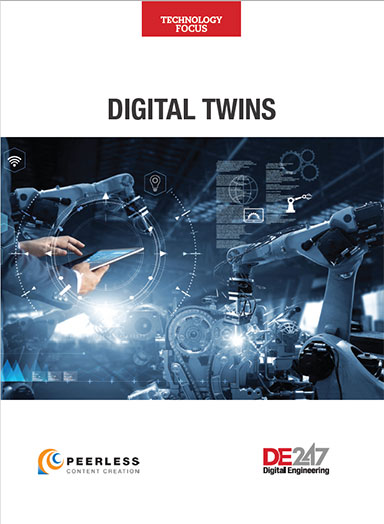
Permco uses its CAD data to create virtual reality training models to help new employees learn how to assembly its products. Images courtesy of Permco.
Latest News
July 5, 2024
The COVID-19 pandemic inadvertently pushed a lot of companies to experiment with new technology—from Zoom calls and cloud-based software, to robotics systems and 3D printing. For Permco, a Streetsboro, OH-based manufacturer of high-pressure hydraulic gear, pumps, and motors, pandemic-related innovations not only resulted in the company applying leading-edge technology to its internal training efforts, it also led to them launching a new tech start-up focused on virtual reality (VR) solutions.
“Traditionally we had very little experience with this type of technology,” says Bryce Dalton, director of talent development at Permco. “This was something brand new for us.”
A family-owned company that has been in business since 1913, Permco has its own machine shop, assembly operation, and shipping facilities, and operates a large distribution network both in the U.S. and abroad. Assembling its hydraulic equipment is a complex, hands-on process that requires a significant amount of training from veteran employees. But the pandemic made that difficult if not impossible.
During the COVID-19 pandemic, Dalton says the company CEO took great pains to keep employees safe. “We were on the extra-cautious side when it came to COVID mitigation,” he says. “We were trying to find out what we could do to find a way to safely train employees on assembly of the pumps, while still following those mitigation measures.”
Permco needed a way to train these employees without face-to-face contact. They found their answer in virtual reality (VR) technology, thanks to an application developed by a tech-savvy employee who was familiar with the hardware.
“We had an individual on our team who had grown up in the industry, and who is now the director of our virtual division,” Dalton says. “He understands the mechanics and the technical side of it, and has a background in coding and development. That was the best of both worlds for us, because we had a developer who was also a subject matter expert.”
In addition to the proprietary software, the solution includes an Oculus headset, although Dalton says they could use any hardware. More recently, they have integrated haptic gloves to provide more realistic feedback to trainees.
Permco imports its own SOLIDWORKS models into the VR training software, although any CAD files will work. Dalton says the system can also use 3D scans of existing parts or assemblies, and can also incorporate photogrammetry. “We could scan a whole tractor and put that in a virtual world and create a digital twin,” Dalton says.
Using the virtual models, new employees are guided through the assembly process hundreds of times. The system gradually reduces the amount of software-guided assistance as they progress, until they can complete the assembly unaided.

Nearby Kent State University provided some interns to help, and eventually the company hired a full-time developer to scale up the solution so that it could be offered to other companies.
The haptic gloves have added a new level of accuracy to the training process.
“We can train it so that if the employee takes their finger across a part, we can put a little burr on that and the haptic feedback glove lets them physically feel it. They know there is an imperfection on the part.”
Using the headset, gloves and software, Permco can quickly train someone to virtually build a pump, the company says shortens the learning curve, quickly builds competency, and saves time and labor. “It is a time saver. You don’t have to pull a trainer out of the assembly operation. You have a virtual trainer and headset,” Dalton says. “Instead of putting a newbie with an experienced person, we can just get the new hire a headset and have a virtual coach go through the whole process.”
Management can track how long it takes each new hire to complete the build, and evaluate accuracy. “We can highlight the components with green or red to tell them if they did it correctly. We can gamify it. Once they have trained for a set amount of time, we take out those alerts and see how quickly and accurately they can build the pump without feedback,” Dalton says. Permco can also identify if trainees are making similar errors, and then adjust the software to strengthen the training around those operations.
Permco is also working with Kent State to conduct research on how effective the system is, as well as measure biofeedback data like pulse rate while employees are using the tool. They will also evaluate how tool placement and other environmental factors affect assembly performance.
Permco worked with experienced staff in its assembly operation to make sure the software accurately reflected all of the steps needed in assembly. “The software gives us this universally agreed upon sequencing and teaching, and once you are on the floor and understand the order of operations, there is tribal knowledge you catch onto,” Dalton says.
Response to the new solution was positive, from the shop floor to the front office. “Our development team and executive team looked at this before we rolled it out, and everybody on the leadership team thought it was unreal,” Dalton says.
It was so successful that once the pandemic restrictions had been lifted, Permco began making the VR training solution a centerpiece of its displays at job fairs and other events. The solution drew large crowds to its booth, which prompted other companies to approach Permco about how it worked.
From there, Dalton says the team felt they could probably market the VR training tool to other companies. “Schools also started coming to us and asked about using it in their training curriculum,” Dalton says. “We put it in a couple of schools, and took it to other tradeshows in our industry.”
With the help of Cleveland-based IP law firm Renner-Otto, the company was able to patent and then market the software as a stand-alone product. Permco now offers the virtual training solution to other companies via its Virtual Training Company subsidiary.
In addition to other industrial companies, Permco has partnered with groups outside of the manufacturing space. For example, earlier this year medical professional training specialist MedCognition partnered with Permco, and gave a demonstration at the West Virginia Coal Show focused on how the VR training tool could be used for education in emergency response, mine rescue, and mine safety.
Moving forward, Permco plans to continue to enhance and expand the VR training tool, and is developing other technology solutions to help improve its business. For example, thDAlton says the company is dabbling with creating an app for its partners that can help them perform flow and displacement calculations.
“We have three or four employees devoted to developing new solutions, and we are getting a lot of traction with customers,” Dalton says.
More Dassault Systemes Coverage

Subscribe to our FREE magazine, FREE email newsletters or both!
Latest News
About the Author
Brian Albright is the editorial director of Digital Engineering. Contact him at [email protected].
Follow DE






